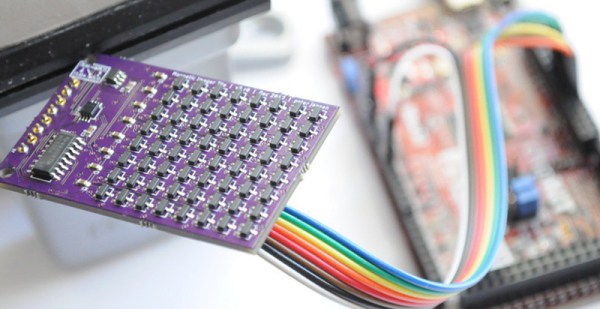Some time before experimenting with MRI machines and building his own CT scanner, [Peter Jansen] wanted to visualize magnetic fields. One of his small side projects is building tricoders — pocket sensor suites that image everything — and after playing around with the magnetometer function on his Roddenberry-endorsed tool, he decided he had to have a way to visualize magnetic fields. After some work, he has the tools to do it at thousands of frames per second. It’s a video camera for magnetic fields, pushing the boundaries of both magnetic imaging technology and the definition of the word ‘camera’.
When we last looked at [Peter]’s Hall effect camera, the device worked, but it wasn’t necessarily complete. The original design used I2C I/O multiplexers for addressing each individual ‘pixel’ of the Hall effect array, limiting the ‘framerate’ of the ‘camera’ to somewhere around 30 Hz. While this would work for visualizing static magnetic fields, the more interesting magnetic fields around us are oscillating — think motors and transformers and such. A much faster magnetic camera was needed, and that’s what [Peter] set out to build.
Instead of an I/O expander, [Peter] re-engineered his design to use analog multiplexers and a binary counter to cycle through each pixel, one at a time. Basically, the new circuit uses two analog muxes for the columns and rows of the Hall effect array, a binary counter to cycle through each pixel at Megahertz speed, and a fast ADC to read each value. It is, bizarrely, the 1970s way of doing things; these are simple chips, and the controller (a Chipkit Max32) only needs to read a single analog value and clock the binary counter really fast.
With the new design, [Peter] is able to get extremely fast frame rates of about 2,000 Hz. That’s fast enough for some beautiful visualizations of spinning motors and transformers, seen in the video below. Further improvements may include three-axis magnetometers, which should allow for some spectacular visualizations similar to [Ted Yapo]’s 3D magnetic field scanner.


















